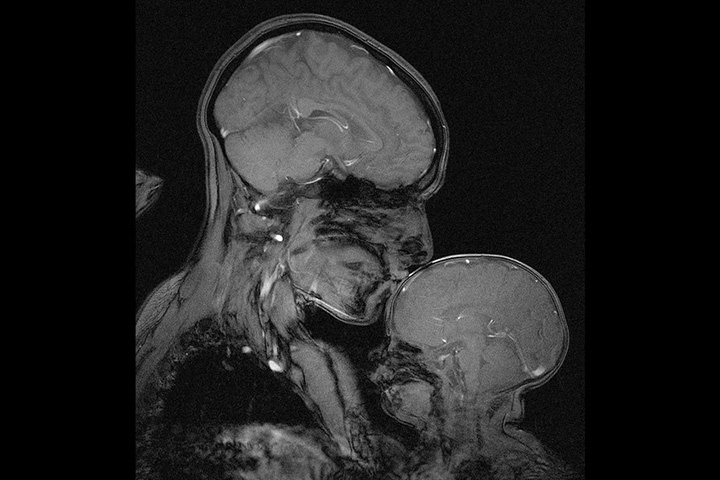A neuroscientist from the Massachusetts Institute of Technology (MIT) captured the bond between herself and her infant son in a unique portrait.

In April, Rebecca Saxe climbed inside the tube of a 3 Tesla magnetic resonance imaging scanner with her young child and recorded a stunning image dubbed Mother and Child.
The MR image shows the intimacy of a mother-son bond, through the eyes of modern technology.
“The Mother and Child is a powerful symbol of love and innocence, beauty and fertility,” Saxe said in a statement. “Although these maternal values, and the women who embody them, may be venerated, they are usually viewed in opposition to other values: inquiry and intellect, progress and power.

Get breaking National news
“But I am a neuroscientist, and I worked to create this image; and I am also the mother in it, curled up inside the tube with my infant son,” Saxe said.
The scientist wrote about why she took the image in Smithsonian Magazine. She explained the image was not made for diagnostic purposes, or even for science, just simply because they wanted to see it.
“To some people, this image was a disturbing reminder of the fragility of human beings,” Saxe wrote. “Others were drawn to the way that the two figures, with their clothes and hair and faces invisible, became universal, and could be any human mother and child, at any time or place in history.”
Saxe explained the image, like most MRIs, took several minutes to capture as the subjects must remain still, as if posing for a daguerreotype, she said.
Named after French chemist and photographer Louis Jacques Mandé Daguerre, the daguerreotype process was the first commonly used in the process of photography in the 1830s.








Comments